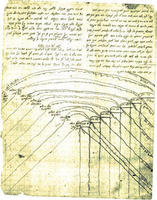Rabbi Yehuda Leib HaLevi Ashlag (Baal HaSulam) – 1884-1954
Rabbi Yehuda Ashlag is better known as Baal HaSulam (Owner of the Ladder) for his Sulam (Ladder) commentary on The Book of Zohar. This work, and his commentary on the Holy Ari’s The Tree of Life, have made him the foremost Kabbalist of the 20th century, as well as one of the greatest Kabbalists of all time.
Rabbi Ashlag spent his entire life interpreting and spreading the wisdom of Kabbalah. His innovative commentaries introduced a unique method for teaching Kabbalah, which enables every person to study the reality we live in, its roots, and its ultimate purpose.
Baal HaSulam was born in Poland. At age 19 he was ordained as a rabbi by the principal rabbis of Warsaw, and for 16 years taught, as well as served as a judge on religious issues. His Kabbalah teacher was Rabbi Yehusha of Porsov.
In 1921, he immigrated with his family to Israel (then called Palestine) and settled in the old city of Jerusalem. The word of his arrival quickly spread among Polish Jews, and he soon became known as erudite and proficient in Kabbalah.
Gradually, a group of student formed around him. They would come to his house in the wee hours of the morning to study Kabbalah. After some time, Baal HaSulam moved from the old city of Jerusalem to another Jerusalem neighborhood, Givat Shaul, where he served as the neighborhood rabbi for several years.
His Major Works
His two principal works, the fruit of long years of labor, are The Study of the Ten Sefirot, based on the writings of the Ari, and The Sulam (Ladder) Commentary on The Book of Zohar. The publication of the 16 parts of The Study of the Ten Sefirot began in 1937. In 1940, his book Beit Shaar HaKavanot (The Gatehouse of Intentions) came out, containing commentaries on selected writings of the Ari. The Sulam Commentary on The Book of Zohar was published in 18 volumes between 1945-1953. Subsequently, Baal HaSulam wrote three additional volumes in which he interpreted The New Zohar. The publication of the latter interpretation was completed in 1955, after his demise.
In his “Introduction to The Book of Zohar” he explained why he called his commentary The Ladder: “I have called my interpretation The Sulam, to show that the purpose of my commentary is as the purpose of any ladder. If you have an attic filled with abundance, you need only a ladder to climb it, and all the abundance of the world is in your hands.”
Baal HaSulam composed a series of introductions to prepare students for the proper study of Kabbalah and to explain the study method. Those writings include “The Preface to The Book of Zohar,” “Introduction to The Book of Zohar,” “Preface to the Wisdom of Kabbalah,” “Preface to The Sulam Commentary,” “A General Preface to The Tree of Life,” and “Introduction to the Study of the Ten Sefirot.” These introductions cover everything students needs to know to maximize their studies and accelerate their progress toward spirituality.
In 1940, Baal HaSulam published a paper he called The Nation. In his last years, he wrote “The Writings of the Last Generation,” in which he analyzed different doctrines of government and outlined a detailed plan to build a wholesome society.
Promoting His Ideas
Baal HaSulam did not settle for putting his ideas to paper. Instead, he worked arduously to promote them. As part of his efforts, he met with prominent figures in Israel such as David Ben Gurion, Chaim Nachman Bialik, Zalman Shazar, and many others.
David Ben Gurion wrote in his diaries that he met with Baal HaSulam several times, and that these meetings surprised him because “I wanted to talk to him about Kabbalah, and he, about socialism.”
About the Man
Baal HaSulam was a fascinating and complex individual: broad-minded, well-educated, and deeply involved in world events in general, and in Israel, in particular. His views were, and still are, considered revolutionary and far-reaching in their boldness.
An excerpt from the newspaper Haaretz, published December 16, 2004: “One day in Jerusalem of the early 1950s, Shlomo Shoham, later an Israel prize-winning author and criminologist, set out to look for Kabbalist Rabbi Yehuda Ashlag. …Ashlag at that time was trying to print Hasulam (literally, The Ladder), his Hebrew translation and commentary on The Book of Zohar… Whenever he would raise a little money, from small donations, he would print parts of his Hasulam. ‘I found him standing in a dilapidated building, almost a shack, which housed an old printing press. He couldn't afford to pay a typesetter and was doing the typesetting himself, letter by letter, standing over the printing press for hours at a time, despite the fact that he was in his late sixties. Ashlag was clearly a Tzadik (righteous man)—a humble man, with a radiant face. But he was an absolutely marginal figure and terribly impoverished. I later heard that he spent so many hours setting type that the lead used in the printing process damaged his health.’”
It took over half a century for his greatness to be recognized, but today his achievements are well known. In recent years, his teaching has attracted a great deal of attention, and hundreds of thousands of people throughout the world study his works, which have been translated into many different languages. Now, anyone who truly wishes to climb to the spiritual world can easily do so.
Baal HaSulam passed away in 1954, but his way has been continued by his successor, his firstborn son, Rabbi Baruch Shalom Ashlag.

